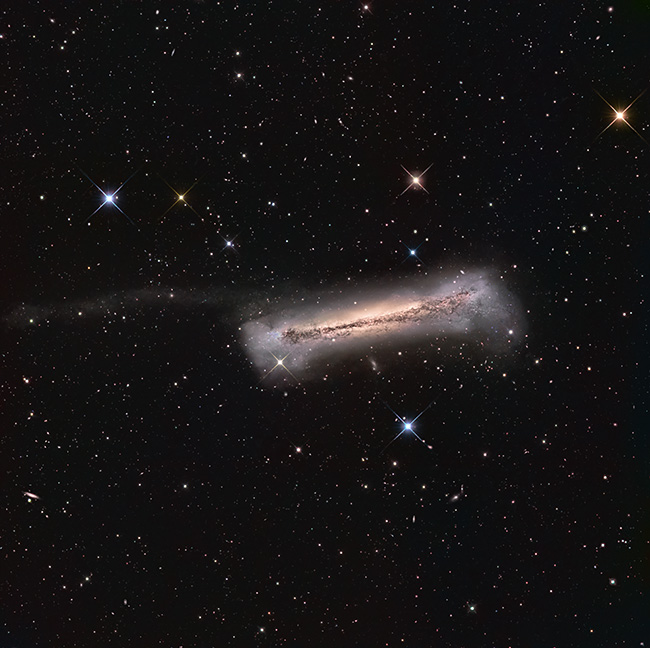
|
Date: Mar. 9/10/11/12, 2024 - Location: DSOC Fort Davis, TX Telescope: RC-16 in. - Camera: FLI 16803 Exposure: Lum = 18x15 min. - Red, Green and Blue = 14x15 min. each (All Binned 1x1) Click on the image to view at higher resolution. |

|
NGC 3628 is an unbarred spiral galaxy viewed edge on. NGC 3628 is a member of a small interacting group of galaxies[1] known as the Leo Triplet[1]. The two other members are M65 and M66. The galaxy lies in the constellation Leo and is approximately 35 million light-years from the Earth[2]. Due to the galaxy's shape, NGC 3628 is commonly known as "The Hamburger Galaxy"[1]. Perhaps the most conspicuous feature of NGC 3628 is the dark band of dust that bisects the galaxy[1]. This dust band is distorted and deformed in the outer regions of the galaxy[4]. This is probably due to gravitational interactions with its neighboring members of the Leo Triplet[4]. Extending to the left of the galaxy is a faint tidal tail. This feature is the result of gravitational interaction with another galaxy[2]. Embedded within the tidal tail is the ultra-compact dwarf galaxy cataloged as NGC 3628-UCD1[2]. Z. G. Jennings, et al.[3] proposed that NGC 3628-UCD1 is an Omega Centauri-like star cluster possibly formed from the nucleus of an infalling dwarf galaxy[3]. A zoomed in version of the image showing the location of NGC 3628-UCD1 may be viewed here. Many distant faint background galaxies can be seen throughout the image. I located six very distant quasars surrounding NGC 3628. A labeled image displaying these quasars may be viewed here.
Member of the Dark Sky Observatory Collaborative
References:
|